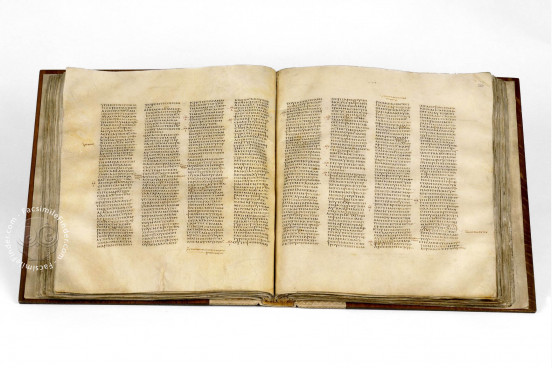The Square Codex and the Evolution of Greek Manuscript Art
The history of the codex format and its impact on manuscript art is a fascinating chapter in the evolution of written communication. Albert Mathias Friend’s insights into the portraits of the Evangelists in Greek and Latin manuscripts offer a compelling look at how the physical dimensions of early codices influenced their decorative elements.
The Square Format of Early Codices
The earliest codices were not the familiar rectangular shape we associate with books today. Instead, they were often wide and square. This unique format significantly influenced how manuscripts were decorated, especially in terms of author portraits. As Friend notes, the square format called for a square picture, which was best achieved by depicting figures in a profile seated pose.
Codex Sinaiticus and Other Early Examples
One prominent example of this early square codex format is the Codex Sinaiticus, a fourth-century manuscript from Sinai. Other significant early examples include the Vatican Virgil, the Ambrosian Iliad, and the Vienna Dioscorides, spanning from the fourth to the sixth centuries. These manuscripts share the characteristic wide, square shape that was common before the codex evolved into the more oblong form.
 Codex Sinaiticus Facsimile Edition
Codex Sinaiticus Facsimile Edition
Artistic Implications of the Square Codex
The shape of the page in these early codices necessitated a corresponding shape for the illustrations. This is particularly evident in author portraits, where a square picture fits seamlessly into a square page. Consequently, the standing author portrait, which later became common, did not originate as a frontispiece in the codex book form. Instead, seated or profile poses were preferred to fill the wide, square space effectively.
Irenaeus and the Fourfold Gospel
The transition from scroll to codex also had theological and symbolic implications. Harvey's hypothesis suggests that Irenaeus, when advocating for a fourfold gospel, was not only referring to the number of gospels but also to the codex format. In his writings, Irenaeus draws parallels between the fourfold gospel and the square shape of the codex, possibly alluding to Ezekiel’s four living creatures, which are described as having a square form.
This theory posits that the codex format, being new and innovative, provided a formal correctness to the fourfold gospel that was previously unrecognized. If the gospel texts in Egypt were initially in scroll form and later adopted the codex format, this transition would align with Irenaeus's emphasis on the fourfold nature of the gospel, reinforcing its completeness and orthodoxy.
The Evolution of the Codex
The codex, which could consist of one or more quires, evolved from simpler notebook forms used during Julius Caesar’s time into more sophisticated and durable book forms. A typical quire, made from folded sheets of papyrus or parchment, could form multiple leaves and pages. This format gained popularity due to its convenience and durability, eventually surpassing scrolls around the third century CE.
Conclusion
The shift from scroll to codex was a pivotal moment in the history of the book. The square format of early codices not only influenced manuscript art but also had symbolic significance, particularly in religious contexts. The transition to the codex format and the subsequent evolution into the rectangular books we know today highlight the dynamic nature of book design and its profound impact on the presentation of textual and artistic content.


Comments
Post a Comment